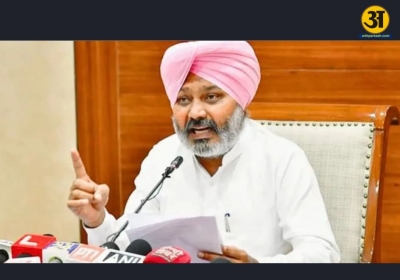
Islamabad is pitching the purchase of 50 JF-17 Block III fighters as a counter to India's S-400
Pakistan's improved JF-17 fighter jet, no match with Rafale
Following Pakistan Prime Minister Imran Khan's return from China, Islamabad is pitching the purchase of 50 JF-17 Block III fighters as a counter to India's S-400 air defense system due to its stealth features. This is nothing more than Pakistani domestic chauvinism, which is completely devoid of facts.
The block III single-engine JF 17 fighter's airframe is believed to be made of composite material in order to provide the stealth capabilities needed to escape the adversary's air defence system and attack high-value assets. Even the indigenous Tejas fighter is made up of 45 percent composite material, but does this imply it can take on the two S-400 systems stationed by the Chinese PLA in Ladakh and Arunachal Pradesh, respectively? The JF-17 is powered by the same Russian RD 33 engine that powers Indian MiG-29 air defense aircraft and is prone to maintenance and spare parts problems.
The S-400 system isn't just for shooting down hostile jets from above. By pushing his AWACS and Strategic Recce Systems (F 16 with DB 110 Recce Pod) back, it limits the PAF Trans border visibility. In the case of hostilities, the Pakistan Air Force will be unable to operate its airborne early warning systems and deep penetration radars because the S-400 missiles will shoot them down. As a result, Pakistani JF-17 jets will be battling without the assistance of AWACS and obsolete Chinese radars. The only exception to this scenario is high mountain terrain, which is exclusively found in Jammu and Kashmir, and Ladakh union territories.
The Indian Air Force has a multi-layered defense system that does not rely just on the S-400. It boasts advanced fighters such as the Rafale, which is equipped with top-of-the-line AESA radar and the deadly Meteor 140-160km range beyond visual range air-to-air missile. This means that JF-17 will have no idea when it was shot down from the sky. To take on the enemy, the IAF has a 70-kilometer-range medium-range surface-to-air missile (MRSAM), as well as the digital Pechora and Akash surface-to-air missiles. To counter stand-alone missiles fired at the air defence network, the S-400 system is always accompanied by close-in weapon systems (CIWS) such as the Russian Pantsir or the American Phalanx.
Finally, the S-400 is a dynamic, relocatable weapon system, as opposed to a static system.
The crux, however, is that the Pakistan Air Force, in comparison to the American F-16, is not very confident in the JF-17 fighter. During Pakistan's failed raid in the Rajouri-Mendhar sector on February 27, 2019, the day after the Indian Air Force destroyed the Jaish-e-Mohammed terrorist training camp at Balakot in retaliation for the Pulwama terror strike, not a single JF-17 crossed the Line of Control (LoC) or even launched a weapon.
The crux, though, is the Pakistan Air Force's own lack of confidence in the JF-17 fighter in comparison to the American F-16. During the Pakistani unsuccessful raid in the Rajouri-Mendhar sector on February 27, 2019, the day after the Indian Air Force terminated the Jaish-e-Mohammed terrorist training camp at Balakot in retaliation to the Pulwama terror strike, not a single JF-17 crossed the Line of Control (LoC) or even launched a weapon.
Also read: Any website or youtube channel that spreads misinformation will be blocked says, ib minister





